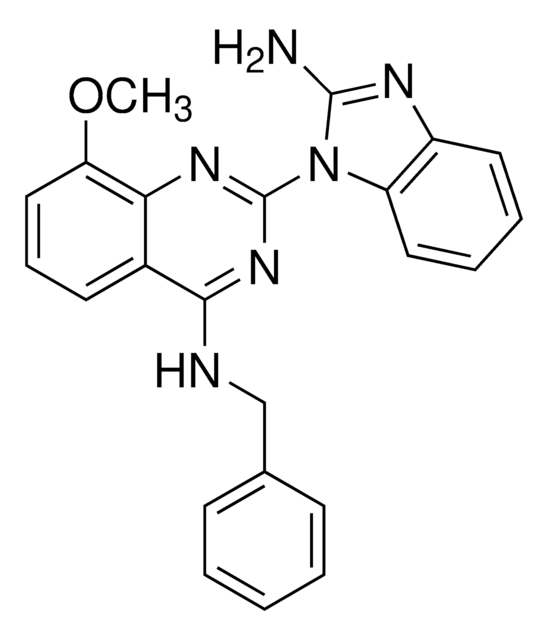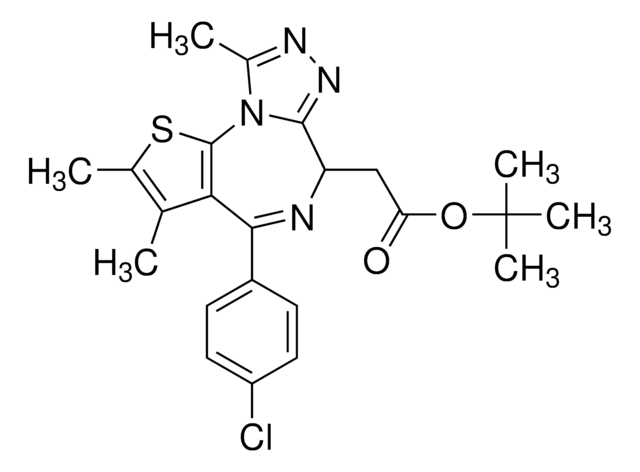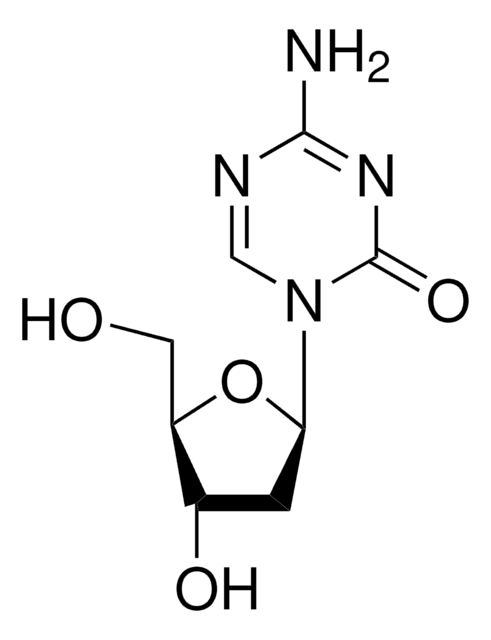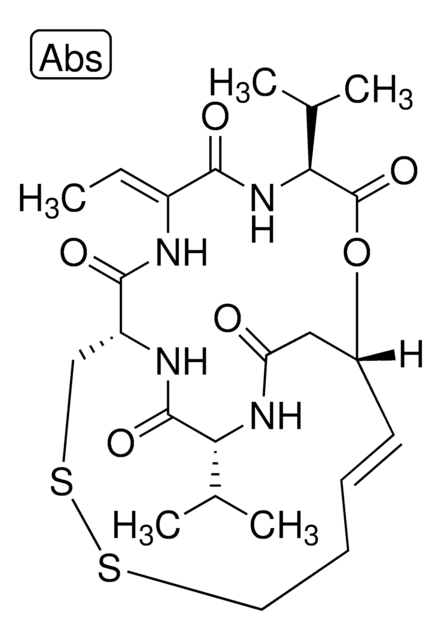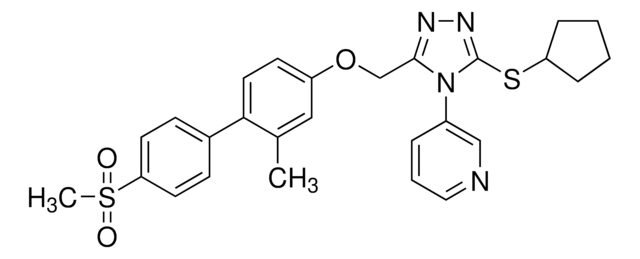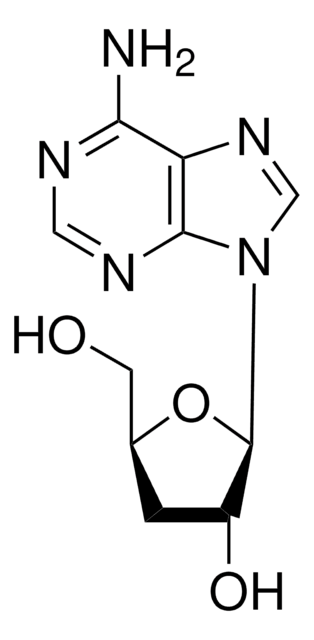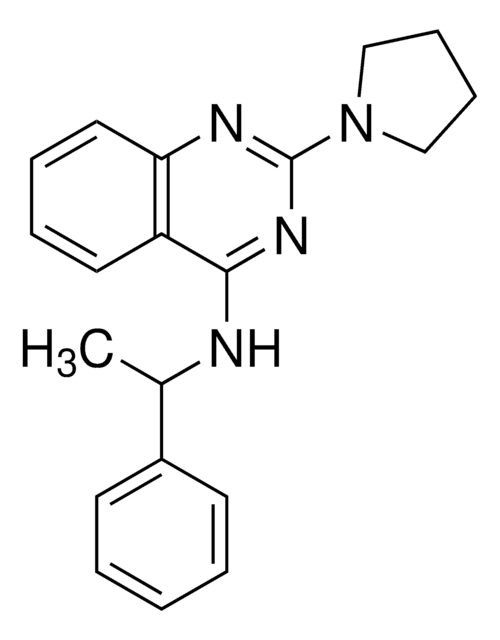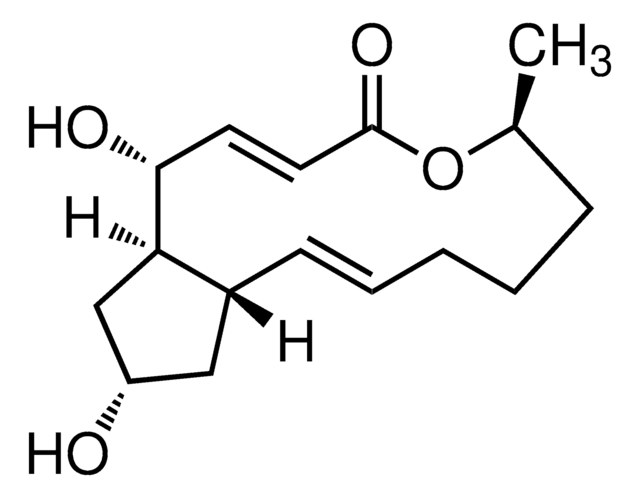Wichtige Dokumente
SML0031
DBeQ
≥98% (HPLC)
Synonym(e):
JRF 12, N2,N4-dibenzylquinazoline-2,4-diamine
About This Item
Empfohlene Produkte
Qualitätsniveau
Assay
≥98% (HPLC)
Form
powder
Farbe
white to beige
Löslichkeit
DMSO: ≥20 mg/mL
Lagertemp.
room temp
SMILES String
C(Nc1nc(NCc2ccccc2)c3ccccc3n1)c4ccccc4
InChI
1S/C22H20N4/c1-3-9-17(10-4-1)15-23-21-19-13-7-8-14-20(19)25-22(26-21)24-16-18-11-5-2-6-12-18/h1-14H,15-16H2,(H2,23,24,25,26)
InChIKey
QAIMUUJJAJBPCL-UHFFFAOYSA-N
Anwendung
Biochem./physiol. Wirkung
Lagerklassenschlüssel
11 - Combustible Solids
WGK
WGK 3
Analysenzertifikate (COA)
Suchen Sie nach Analysenzertifikate (COA), indem Sie die Lot-/Chargennummer des Produkts eingeben. Lot- und Chargennummern sind auf dem Produktetikett hinter den Wörtern ‘Lot’ oder ‘Batch’ (Lot oder Charge) zu finden.
Besitzen Sie dieses Produkt bereits?
In der Dokumentenbibliothek finden Sie die Dokumentation zu den Produkten, die Sie kürzlich erworben haben.
Kunden haben sich ebenfalls angesehen
Artikel
We presents an article on Autophagy in Cancer Promotes Therapeutic Resistance
Unser Team von Wissenschaftlern verfügt über Erfahrung in allen Forschungsbereichen einschließlich Life Science, Materialwissenschaften, chemischer Synthese, Chromatographie, Analytik und vielen mehr..
Setzen Sie sich mit dem technischen Dienst in Verbindung.